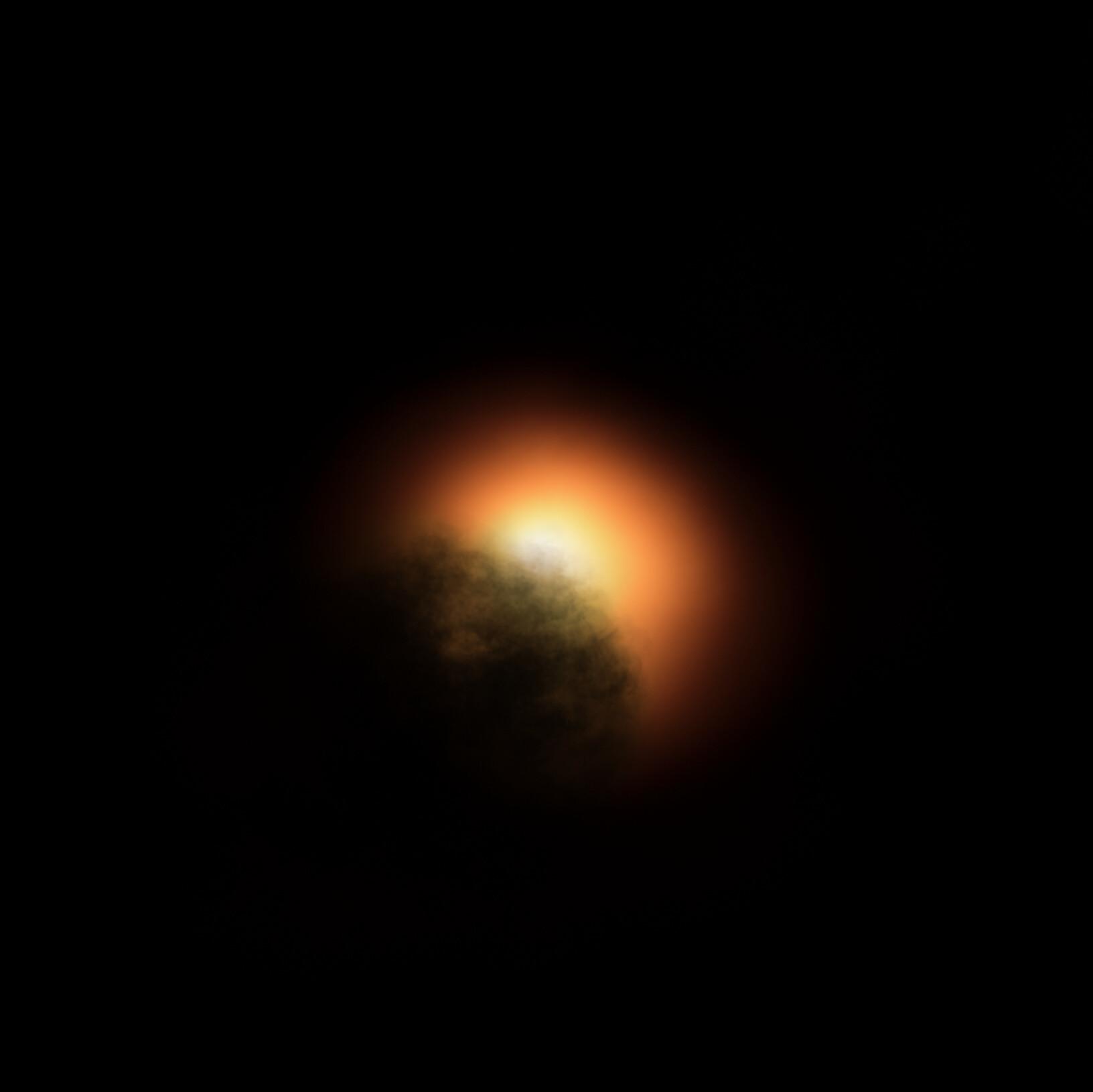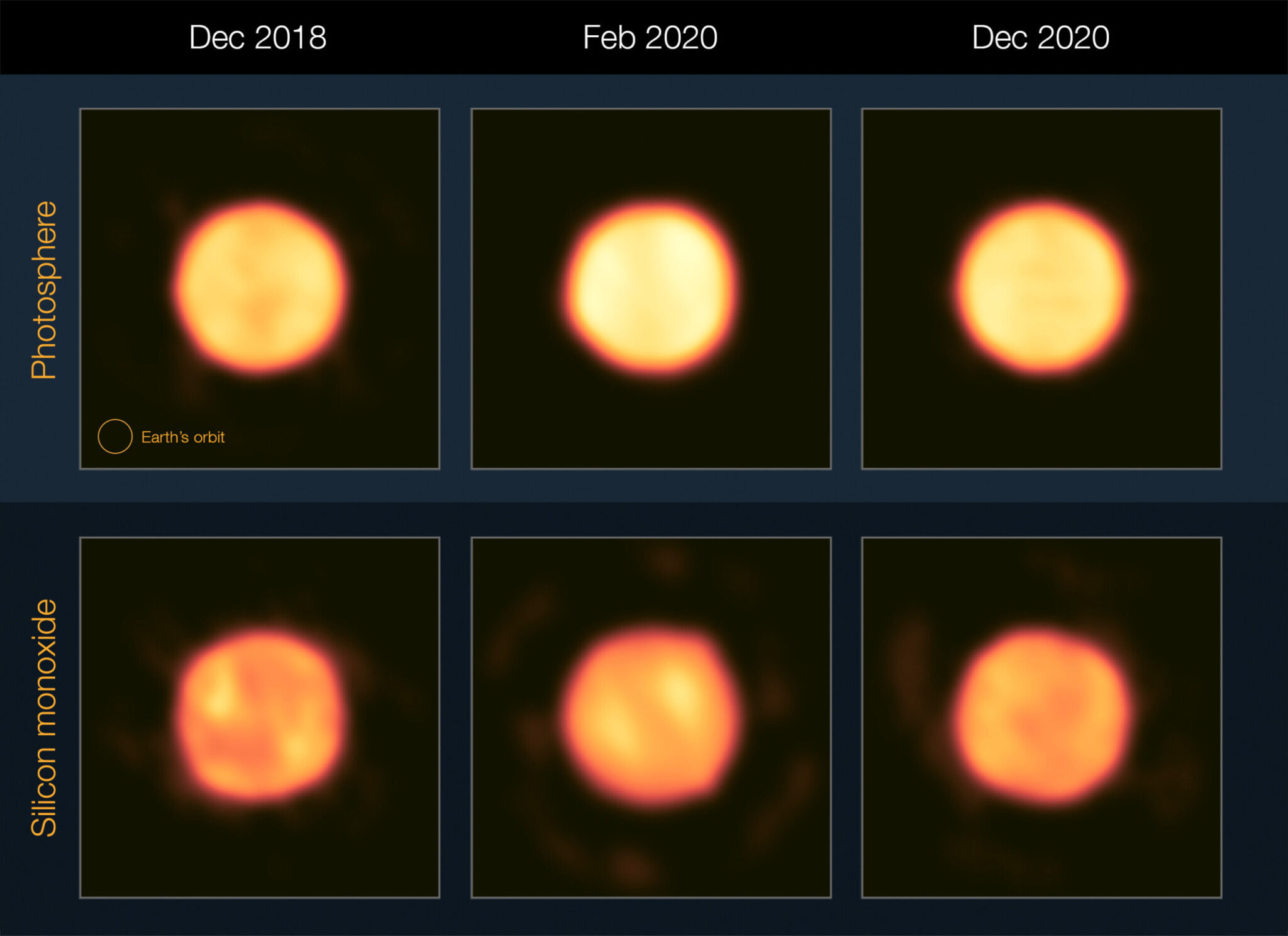The constellation Orion is one of the most recognizable in the night sky. On its “left shoulder” is the equally famous Betelgeuse star, a red supergiant that is 550 light-years away from us. This luminary has a radius of 617 million km. If it were in the place of the Sun, it would absorb the orbit of Mars.

Betelgeuse is also a variable star, meaning the luminous flux from it is not constant. But in this case, this variability is semiregular; the pulsations of the luminary last about 400 days.
In 2020, the star dimmed unexpectedly much: its visual brilliance dropped by 1.6 magnitude. The decrease in brightness was uneven and affected the Southern Hemisphere more strongly. This event was called the “Great Dimming” and gave rise to various theories, including the appearance of starspots or dust clouds.
The Great Dimming is discussed in an article published in the journal Astronomy and Astrophysics. The researchers used 15 years of data from the STELLA telescope to study the photosphere (visible layer) of Betelgeuse in incredible detail and identify five layers in it. Scientists could get valuable information about radial pulsations, shock waves, and how they pass through the photospheric layers.

The analysis showed that variations in the inner layer of the photosphere, known as C1, corresponded to the time scales of changes in visual magnitude. The shock waves passing through these layers also turned out to be generally consistent with changes in brightness.
As for the “Great Dimming” of 2020, the data showed two powerful shock waves in the photosphere. The first of them was probably the reason for the large outflow of material, which caused the fall of all layers. When it reached its maximum speed, a second, more powerful shock wave arose, which led to a further outflow of matter. Due to the enormous thickness of the different layers of the photosphere, these events did not occur in all of them at the same time, and it was only at the beginning of 2022 that Betelgeuse regained its brightness.
Earlier, we reported on how Betelgeuse dimmed again on December 12th.
According to sciencealert.com
Follow us on Twitter to get the most interesting space news in time
https://twitter.com/ust_magazine


